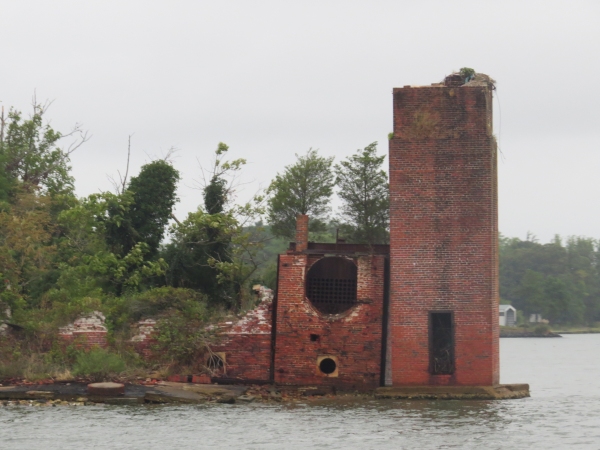Chesapeake - Reedville to Smith Creek
/Day 5 – 31 nm (passage total: 147 nm) It rained during the night and the forecast called for more … and more. We heard flood warnings for the local inland areas. The sun rose, but the dark, heavy sky dampened its enthusiasm … and ours. Still, we were up and out of the Cockrell Creek anchorage by 0700. It was chilly and raw and we donned our rain gear. David and Paul raised the anchor while I was at the helm. They seemed to be taking an inordinate amount of time on the bow and I wondered if there was a problem. It appears a very large spider had taken up residence in the furler and was rather obstinate about vacating his home. The hose used to wash down the muddy anchor was also used to convince the arachnid to give it up.
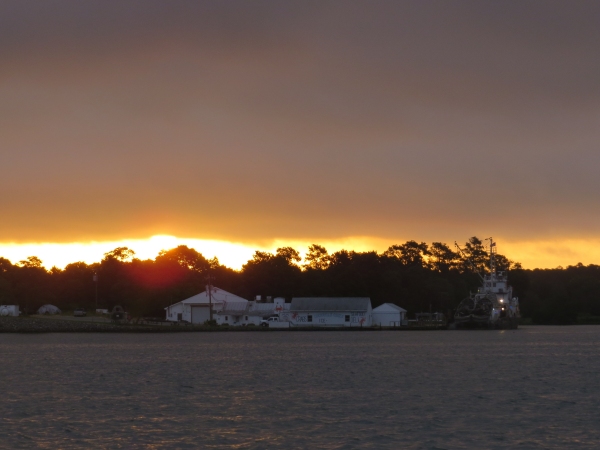
Now that we knew some of the history associated with the Cockrell Creek fish factory ruins and the solitary chimney stack, we paid more attention as we passed by. The Morris-Fisher stack “proudly stands over 130 feet from base to crown and is affectionately known by locals and visitors alike, as Reedville’s own “Statue of Liberty”. Evidently, the stack was in bad shape and falling down up until a few years ago when a huge community effort, “Save the Stack”, raised enough funds to have it repaired. “The stack is an iconic landmark of Reedville and the Northern Neck’s menhaden factories.[...] This is the last stack like this of any factory that operated in the Northern Neck. Through the years, this statuesque landmark has served as a visual aid to the watermen and sailors of the past. “When they saw the stack, they knew they were home.” Awesome!
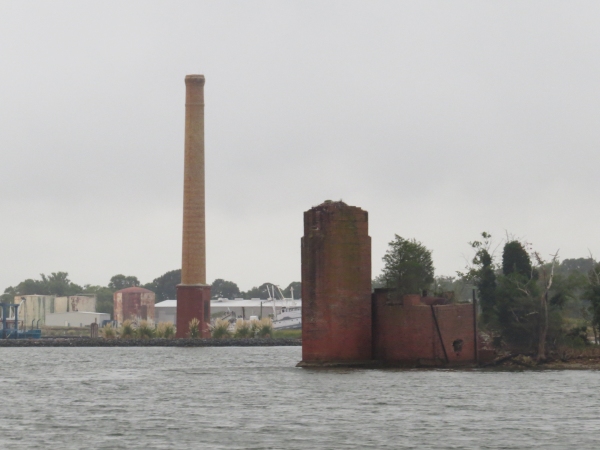
We rounded the bend and headed back out into the Chesapeake. We passed Smith Point Light and then crossed the state line from Virginia into Maryland just as the rain began in earnest. This was a very, very wet day, but we needed showers anyway.
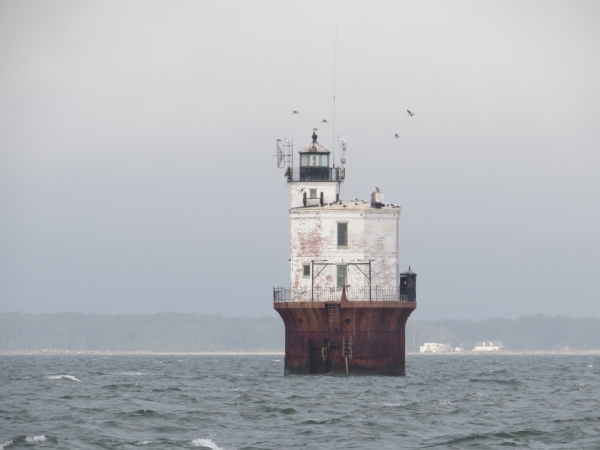
We ran with just the jib and hung a left out of the bay and into the historic Potomac River. The ride was bumpy with wind against current. Our plan had been to head five miles up the St. Mary's River to St. Mary's City, the site of Maryland's first capital. After further investigation, we found the colonial site was closed on this day and since it was pouring we wouldn't go ashore anyway. Instead, we found an alternative anchorage in Smith Creek. Maybe we'd visit St. Mary's City on our return trip.
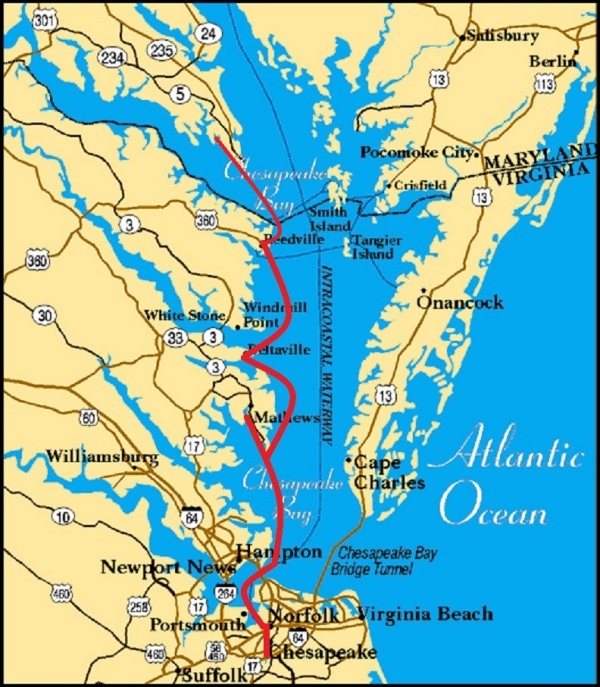
The entrance to Smith Creek was a tricky dog-leg around shoals which was well-marked and wouldn't have been half so tricky if it wasn't cluttered with crab pots. Why the crabbers have to place the pots in the middle of the channel escapes us, but they do and negotiating around them in a sailboat is not all that easy. We muddled through and then encountered several fish traps. That said, David managed admirably and we had no crab pots nor fish traps on our prop when we finally found a place a to anchor for the night.
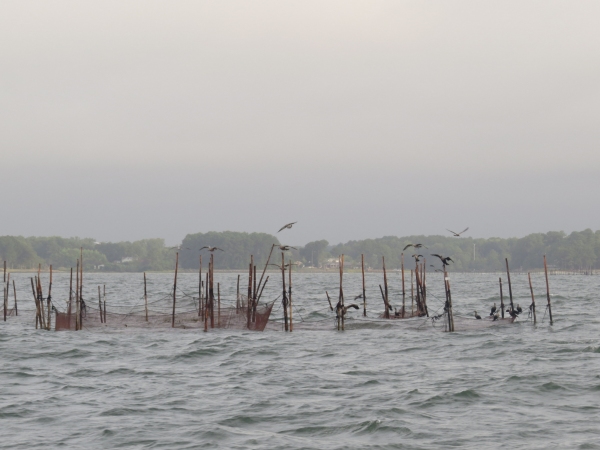
Soaked and chilled, we went below to dry off only to discover the head was leaking, as was the forward faucet (new problem) and two of the hatches. Grrrr! A cursory check indicated there was nothing to be done in the midst of the downpour and there was no danger of sinking, so we did the only thing we could think of to do … have lunch and take a nap.
The leaks hadn't disappeared when we rose in time for dinner, but we ignored them while we ate and watched a movie. We'll figure it all out tomorrow.




